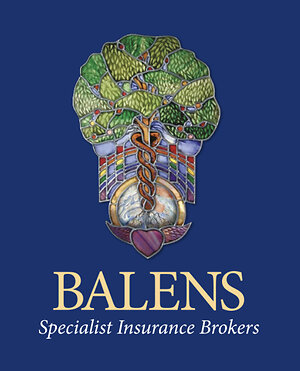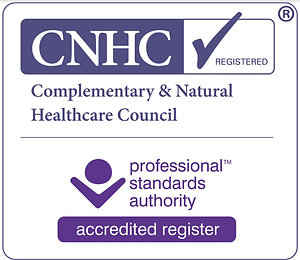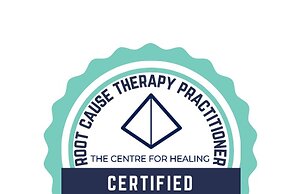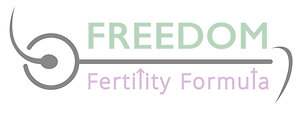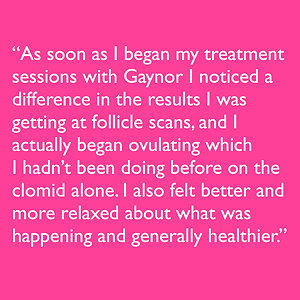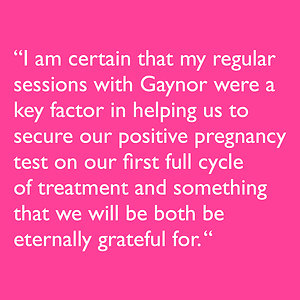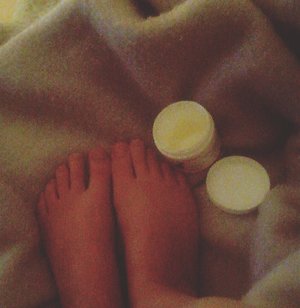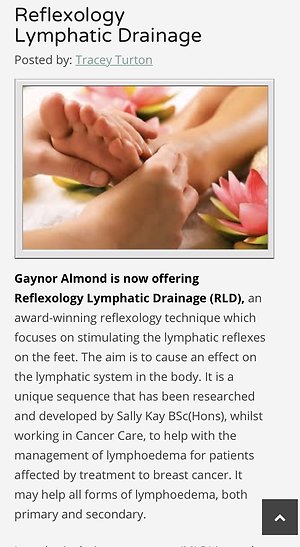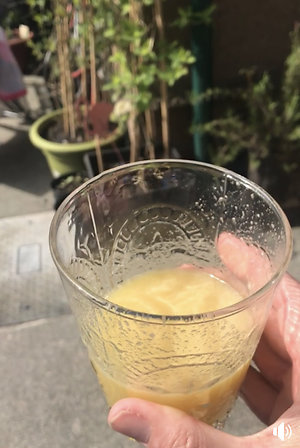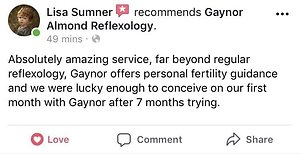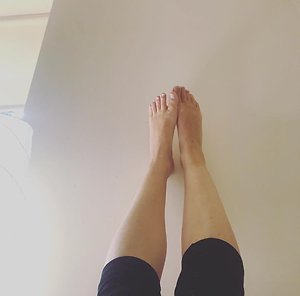Are you looking for EMDR?
Sometimes an experience is too big, overwhelming, painful, or traumatic for you to process by yourself.
Whether you're looking for EMDR to help you recover from trauma, or a painful life experience.
Or to guide you through the pain and grief of (in)fertility, pregnancy loss or reproductive trauma. See also The Freedom Fertility Formula™
EMDR can help activate your natural processing system, allowing the overwhelming experience to ‘reprocess’ and be integrated into your psyche, so it can find resolution; until it no longer affects you and you can leave it in the past where it belongs.
My hope as a trauma-informed coach is to guide to do the healing work to visit painful experiences of the past to change core beliefs about yourself, while feeling safe in the here and now.
I work in a very integrated way, drawing on different modalities, regression (RCT), inner child work, energy psychology, which offers a more holistic approach to treatment; leading to better outcomes for clients.
See also Root-Cause Therapy (RCT)
Initial Consultation
This is your Free initial 15 minute phone consultation and discovery chat. To assess whether EMDR is right for you, and for you to share what issues you would like to overcome, and goals you would like to achieve. I can go into more detail how I can help you, and about the EMDR therapy techniques I will be using to support you, and answer any questions you may have.
Sessions are available face-to-face in Warrington, or via video call / Zoom sessions.
Contact me
Or text me to book your free 15 min initial 07895756252
Free 15 min consultation
£0
About 15 min
Coaching Sessions
£70
About 60 mins
What is EMDR
Eye movement desensitisation and reprocessing (EMDR), involves moving your eyes a specific way while you process traumatic memories, and make new connections, ultimately reducing the distress associated with the trauma.
EMDR's goal is to help you heal from distressing life experiences.
What is EMDR used for?
EMDR is recommended for trauma survivors and people struggling with post traumatic stress disorder (PTSD), which EMDR was originally developed to treat. It has also proven effective for other conditions, including:
- Unresolved Past Trauma
- Recent Trauma
- Excessive grief
- Addiction
- Smoking cessation
- Anxiety
- Performance anxiety
- Chronic emotional pain
- Chronic physical pain
- Somatic conditions
- Panic attacks
- Depression
- Eating disorders
- Weight management
- Phobias
HOW CAN EMDR HELP DURING PRECONCEPTION/ PREGNANCY/ POSTPARTUM?
When your journey to grow your family hasn't gone as planned, it can leave behind many unhealed wounds.
The pain or traumatic experience of "In"fertility, pregnancy loss, miscarriage, stillbirth, abortion, TMFR, highrisk pregnancy, Birth trauma, time spent in NICU.
You may hold negative feelings about your own body, or about pregnancy, or your baby's birth.
My hope is to support you to meet yourself with compassion and understanding, of the devestating impact these unhealed wounds can have on your psyche and physiology.
Guiding you to use the wisdom of the body to help you work through your most painful emotions or trauma, in reflection and self-discovery to diminish fear; so you can heal and move on.
EMDR can be used alone or combined with other modalities to relieve symptoms / fears / beliefs that can cause you to feel overwhelmed, stuck or hopeless including:
- (In)fertility
- Fertility treatments
- Pregnancy loss
- Ectopic pregnancy / medical trauma
- TMFR / abortion
- Highrisk pregnancy
- Birth Trauma
- Time spent in NICU
- Deepen bonds with baby / breastfeeding
- Past traumas that have resurfaced
Helping you to diminish fears and provide relief from distress or trauma, to prepare you for pregnancy / labour / childbirth / postpartum life.
How does EMDR work?
EMDR uses eye movements and other types of bilateral stimulation (BLS) to help the brain access and process traumatic memories and beliefs.
The eye movements used in EMDR, such as tracking your therapist’s finger as it moves from left to right, are one kind of BLS. EMDR’s eye movements are meant to mimic the rapid eye movement (REM) you experience during the final stage of a sleep cycle, when you dream and your brain works through experiences and makes connections.
What is bilateral stimulation (BLS)?
What is bilateral stimulation (BLS)?
BLS is a process that engages both the left and right sides of your brain and body in an alternating, consistent rhythm or pattern.
EMDR uses bilateral stimulation to allow your brain to make new neural connections.
Common BLS types used in EMDR include:
-Slow, rhythmic tapping on the knees or shoulders
-Following your therapist’s finger from left to right with your eyes
-Squeezing a ball in one hand and then the other
How does BLS work?
BLS engages both sides of the brain. The left-brain (logical/thinking/language) or right-brain (creative/emotional/visual interpretations).
BLS and trauma processing
BLS helps stimulate both sides of your brain so you can make new connections and process traumatic memories that may have gotten “stuck.” Processing trauma often requires making associations, interpreting visual information, putting words to your feelings, and working through both positive and negative feelings. BLS helps your brain accomplish these tasks so you can make meaning from what happened and move forward.
Phases of EMDR
EMDR consists of eight distinct stages:
1. History-taking
The first part of EMDR, is for us to establish a relationship, share your history, and determine your reason for seeking treatment.
You may want to try EMDR because of a specific traumatic memory that’s negatively affecting your life. You may have had a traumatic experience but have no memory of it, or you may be seeking treatment for distressing thoughts, feelings, or behaviors that may or may not be rooted in a specific trauma.
In history-taking, I will be able to learn more about you and decide whether I think EMDR can help. If so, I’ll work with you to identify a distressing memory or belief to target with treatment.
2. Preparation and resourcing
Before proceeding, I will prepare you by explaining how EMDR works and helping you practice various forms of BLS. You’ll also learn a variety of methods (or “resources”) for managing your emotions, including:
Containment: Using your imagination and sensory language, I will help you to create a specific container (such as a box) in which to keep memories, thoughts, feelings, or beliefs you aren’t yet ready to address.
Safe place: Through a guided relaxation, tapping into your imagination and sensory language, you’ll place yourself in a natural environment that feels completely safe and peaceful (this can be real or imagined, such as a place in nature).
Sensory memories: You’ll make a list of sensory experiences that bring you joy or make you feel safe (like cuddling a pet, eating your favourite ice cream or homemade soup, being in nature like swimming in the sea, or walking in a forest).
3. Activation and assessment
Once you’re prepared and have resources at your disposal, I will help you “activate” your distressing target memory. And I’ll help you use your resources to regulate your emotions. You’ll identify what’s happening in the memory and what you’re thinking and feeling.
During “assessment,” you’ll evaluate your levels of distress as well as certain beliefs you have.
Rating your distress helps us to understand which specific parts of the target memory upset you most. And we can work together to help you develop better resources to manage those emotions. Eventually your traumatic memory will become less distressing, and you’ll rate that memory lower and lower until it’s no longer upsetting at all.
We will then measure how true a belief feels, not how true you think or know it is. This helps us to learn what beliefs you have about your traumatic memory and identify healthier beliefs you’d like to adopt regarding what happened.
4. Desensitisation
At the desensitisation stage, I will ask you to focus on the target memory during bilateral stimulation. You’ll measure your distress and share any insights, connections, or new memories that emerge. This will help me to determine new targets for further desensitisation. This work continues until your distress associated with the target memory disappears or reaches a reasonable low point.
5. Installation
Once you’ve been desensitised to your painful, overwhelming, or traumatic memory, I will use eye movements and other forms of BLS to help you adopt and strengthen the positive belief you identified during the assessment stage.
6. Body scan
In the next step, the body scan, you’ll assess what’s happening in your body as you revisit your traumatic memory and your new positive belief. This helps you identify any lingering tension in your body that may need to be addressed.
Even if you’ve intellectually adopted your positive belief, your body may feel otherwise. Trauma’s residual effects can be felt in the body, and they can’t be addressed through logic alone. The body scan allows you to strengthen the connection between what your brain knows and what your body feels.
7. Closure
During closure, the final stage of every session, you’ll use some of the resources you learned during the preparation stage to help you return to a state of emotional balance and calm.
8. Reevaluation
While closure ends every session, reevaluation is added each time after the initial session’s history-taking and preparation stages. Here, I will check in on your stress levels, beliefs, and body tension. This allows me to see if your treatment has helped, if more work is required, or if new targets need to be addressed.

